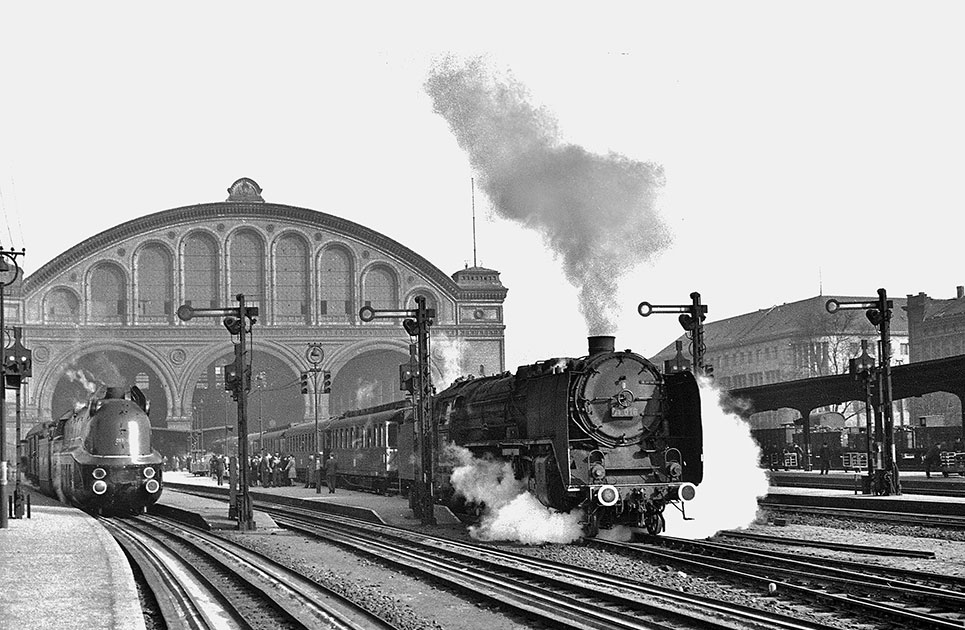

Railway lines used for deportations
During the National Socialist period, the Deutsche Reichsbahn played a key role in the systematic extermination of European Jews. Between October 1941 and March 1945, thousands were deported from three Berlin stations.
In early June 1942, the first deportation trains left Anhalter Bahnhof on their way to Theresienstadt, a ghetto and concentration camp north of Prague. In 1942, the station Theresienstadt-Bauschowitz was situated along the Dresden to Prague railway line. 116 such deportations, known as “Alterstransporte”, departed from Anhalter Bahnhof until shortly before the end of the war. The deportations initially consisted of 50, later 100 people and were added as extra wagons to normal scheduled trains to Dresden or Prague. Thus over 9,600 people were deported during normal railway operations from this busy station. The trains left Berlin at around 6:07 in the morning, crossing the Yorckbrücken on their way to concentration and extermination camps. Many camps were situated in regions of Eastern Europe that were occupied by the German Reich. They were the final destination of the deportations.

Anhalter Bahnhof 1940
At 3.15 in the morning, deportees had to walk to Monbijouplatz, where they boarded special trams taking them to Anhalter Bahnhof – together with soldiers from the Göring Battalion. From there, Jews were transported towards the Theresienstadt concentration camp in two wagons of the daily train to Dresden«
Rose-Marie Schnapp, born in 1921,
worked in kitchens of the assembly camp at Grosse Hamburger Strasse until she was deported to Theresienstadt.
Each transport initially evacuated 50, later 100 people. At 5 o‘clock in the morning, they were loaded onto special trams that took them to Anhalter Bahnhof. At the station, one or two express train wagons were added to the train to Karlsbad. So the conditions during their journey were very tolerable. Nobody in Berlin knew what to expect in Theresienstadt.«
Hildegard Henschel, born in 1897,
was deported to Theresienstadt aboard “Transport I / 96” on June 17, 1943 and liberated there in May 1945.
1 Anhalter Bahnhof 1940
Archiv Eisenbahnstiftung
2 zit. nach: Dietlinde Peters, Der Anhalter Bahnhof als Deportationsbahnhof. Berlin 2011, S. 18
3 zit. nach: Alfred Gottwaldt / Diana Schulle, Die „Judendeportationen“ aus dem Deutschen Reich 1941–1945. Wiesbaden 2005, S. 287



1 Anhalter Bahnhof 1940
Archiv Eisenbahnstiftung
2 zit. nach: Dietlinde Peters, Der Anhalter Bahnhof als Deportationsbahnhof. Berlin 2011, S. 18
3 zit. nach: Alfred Gottwaldt / Diana Schulle, Die „Judendeportationen“ aus dem Deutschen Reich 1941–1945. Wiesbaden 2005, S. 287



